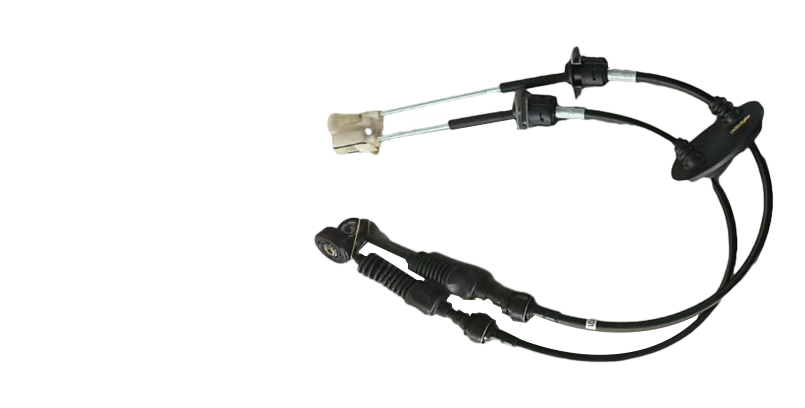Troubleshooting a Malfunctioning Gear Shift Cable in Your Vehicle
The Implications of a Broken Gear Shift Cable Understanding the Impact on Vehicle Performance
A gear shift cable is an essential component of any vehicle's transmission system, connecting the gear shifter in the cabin to the transmission itself. This seemingly insignificant cable plays a crucial role in ensuring smooth gear changes and overall driving experience. However, when the gear shift cable becomes damaged or breaks, it can lead to various performance issues that significantly affect the operability of the vehicle. In this article, we will explore the causes of a broken gear shift cable, the symptoms that indicate a problem, and the importance of timely repair.
Causes of a Broken Gear Shift Cable
Several factors can contribute to a broken gear shift cable. Over time, cables can suffer from wear and tear due to constant movement, weather conditions, and exposure to various elements. Corrosion can occur, especially if the vehicle is frequently exposed to moisture, leading to a weakened cable structure. Furthermore, improper installation or low-quality materials can also lead to premature failure.
Additionally, mechanical issues within the transmission system can put undue stress on the gear shift cable, causing it to fray or snap. For instance, if the transmission is low on fluid or if internal components are malfunctioning, this can create excessive strain on the cable when attempting to shift gears.
Symptoms of a Broken Gear Shift Cable
A broken gear shift cable can exhibit several symptoms. The most notable sign is difficulty in shifting gears. Drivers may find that they are unable to move the gear shifter into different positions, making it impossible to shift from park to drive or reverse. In some cases, the gear shifter may feel loose or disconnected, providing little resistance when attempting to change gears.
Another potential symptom is the inability to engage gears properly. A driver may notice that the vehicle is stuck in one gear, which can lead to reduced acceleration and power. Additionally, warning lights may illuminate on the dashboard, indicating potential transmission or cable issues. A sudden inability to shift gears could pose a dangerous situation, especially if it occurs while driving at high speeds.
broken gear shift cable

The Importance of Timely Repair
Addressing a broken gear shift cable promptly is essential for maintaining vehicle safety and performance. Ignoring the signs of a faulty cable can lead to more severe problems within the transmission system, resulting in costly repairs. For instance, a broken cable can cause the transmission to become unresponsive, leading to a complete loss of control over the vehicle.
Furthermore, driving with a damaged gear shift cable can put other components at risk. Prolonged stress on the transmission can lead to internal wear and ultimately necessitate a full transmission rebuild or replacement—an expensive endeavor that can be avoided with straightforward preventive maintenance.
Preventive Measures
Preventive maintenance is key to prolonging the life of a gear shift cable. Vehicle owners should periodically inspect their cables for signs of wear or fraying. Regular maintenance of the vehicle's transmission system, including fluid checks and replacements, will also help ensure that the gears shift smoothly, reducing strain on the cable.
Additionally, when experiencing any symptoms associated with a broken gear shift cable, it is essential to consult with a professional mechanic. A qualified technician can assess the situation accurately, providing a timely diagnosis and repair that will restore the vehicle's performance.
Conclusion
In conclusion, while a broken gear shift cable may seem like a minor issue, it can have significant implications for vehicle performance and safety. Drivers should be attentive to the symptoms associated with a malfunctioning cable and seek prompt repair to avoid more extensive damage to the transmission system. By prioritizing maintenance and being proactive about any changes in vehicle behavior, drivers can ensure safer and smoother driving experiences, keeping their vehicles in optimal condition for years to come. Understanding the importance of this unassuming component helps highlight the intricate network that makes up a vehicle's transmission system, emphasizing the need for diligent care and professional assistance when necessary.
-
Workings of Clutch Pipe and Hose SystemsNewsJun.04,2025
-
The Inner Workings of Hand Brake Cable SystemsNewsJun.04,2025
-
The Secrets of Throttle and Accelerator CablesNewsJun.04,2025
-
The Hidden Lifeline of Your Transmission Gear Shift CablesNewsJun.04,2025
-
Demystifying Gear Cables and Shift LinkagesNewsJun.04,2025
-
Decoding Clutch Line Systems A Comprehensive GuideNewsJun.04,2025
